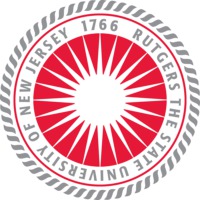Studying mechanisms behind optimal hand recovery allows technological interventions to retrain people with neurological diseases
Although 75% of patients post stroke learn to walk again, only 25 – 45% demonstrate meaningful recovery of hand function, affecting their independence and requiring costly supportive care. Hand therapy in the early period of heightened neuroplasticity following stroke is not prioritized in medical care units, and there is therefore a vital need to develop effective interventions for hand rehabilitation. Dr. Alma S. Merians, Professor and Chair of Rehabilitation and Movement Sciences at Rutgers University, investigates the underlying mechanisms that account for optimal hand and arm recovery and the key relationship between types of rehabilitation training, timing, and dosage. Collaborating with other physical therapists, neuroscientists, and biomedical engineers, Dr. Merians utilizes technology-assisted hand rehabilitation to retrain people with neurological diseases like stroke or cerebral palsy.
A practicing physical therapist for more than 20 years, Dr. Merians has extensive clinical expertise in the rehabilitation of adults and children with neurological disorders. Throughout her practice, she has witnessed many challenges to recovery of neurological impairments, and developed a deep passion to help patients post-stroke improve the functions of their upper limbs. Her previous research background is in cortical level brain systems and basic mechanisms underlying neuromuscular control of human movement and sensorimotor learning, and her team was one of the pioneering groups to use interactive, adaptive robotics and functional and gaming virtual reality simulations to rehabilitate the hand and arm after stroke. Using these systems, Dr. Merians and team have trained over 60 patients in the chronic phase post-stroke and 10 children with cerebral palsy. They are currently collecting pilot data for a clinical trial using this system for patients in the acute, early stage post stroke, and ultimately, they hope to provide these technological tools at the hospital-based system for free and used for scientific pursuits and commercialize the home-based system for home use.
Current research includes:
- Building Technological Tools for Recovery of Hand Function: Recent studies indicate that determining the right amount of treatment provided and progressively increasing the level of difficulty of a task are critical to recovering function. Unlike commercially available video games that require extreme hand dexterity, the library of 16 adaptive gaming and functional simulations that Dr. Merians’ team develops are designed for people with neurological disabilities that help exercise both the proximal upper extremity and the hand in either an integrated or non-integrated manner. These systems demonstrated that they could target specific hand impairments by training individual finger manipulation, and Dr. Merians continues to develop robots and virtual reality simulations to provide the right “dosing” or intensity and progression of a rehabilitation program needed to drive neural changes and lead to better functional outcomes.
- Determining Optimal Time Frame for Initiating Intensive Rehabilitation: Dr. Merians’ team also asks whether there is a critical time period after injury in which the brain is most responsive to sensorimotor input and training. It is known that response to intervention decreases as time post-stroke increases. Therefore, Dr. Merians and her team are testing if intensive training focusing on the hand in the first few days following a stroke, while the patient is still in the hospital, results in a more functional arm, or if comparable outcomes will be achieved if therapy is initiated right after discharge from the hospital.
- Understanding Mechanisms of Improvement: Dr. Merians studies the underlying mechanisms of improvement by examining the changes in kinematics and kinetics of the hand and arm associated with this innovative training. By developing hand kinematic and kinetic recovery profiles from the computerized virtual reality simulations and other interaction tests, the team can analyze changes in hand and arm motions.
- Quantifying Patterns of Cortical Reorganization Underlying Recovery: Using transcranial magnetic stimulation, Dr. Merians and her team measure changes in the expanse of cortical territory representing multiple hand muscles used for fine and gross motor control, and correlate these changes with clinical and kinematic performance in order to identify neural markers predictive of stroke recovery and responsiveness to intensive hand training.
- Providing Data for Clinicians Regarding Therapeutic Interventions Post-Stroke: Dr. Merians’ team has shown that after training with their system, patients with hemiplegia are able to more effectively control their arm during reaching and more effectively open and move individual fingers of their hemiplegic hand when interacting with objects. They also showed increased cortical excitability and brain connectivity. In order to provide more continual, on-going practice, Dr. Merians is developing an affordable home-based system that has features similar to the hospital-based system. The home base system will provide low-cost hand tracking and arm support devices, a web based patient and clinician communication platform, a background database, and training performance reports.
Bio
As a practicing physical therapist for more than 20 years, Dr. Merians has extensive clinical expertise in the rehabilitation of adults and children with neurological disorders. Through this practice, she gained a deep understanding of the many challenges to recovery of neurological impairments. Her path to research was guided by this practice and the desire to improve outcomes for the patients, as traditional rehabilitation treatment methods have provided tangible but limited improvements in recovery of function and independent living. Dr. Merians’ early research focused on two areas: the study of cortical level brain systems and the basic mechanisms underlying neuromuscular control of human movement and sensorimotor learning. Uncovering some of the precise movement deficits in patients with cortical brain lesions inspired her to think about innovative methods to facilitate the reacquisition of these functional movements.
Ever since she was young, Dr. Merians was interested in biology and anatomy, serving as a volunteer to help handicapped children at age twelve. This experience played an important role in her training of physical therapy, and as she practiced physical therapy she felt that there were questions that needed to be answered. In collaboration with biomedical engineers, she currently works to utilize technology-assisted rehabilitation to retrain people with neurological diseases like stroke or cerebral palsy. Her group is amongst the first to pioneer the use of interactive, adaptive robotics and gaming virtual reality simulations. Dr. Merians continues to study and develop effective interventions that help rehabilitate the hand and arm after stroke.
Outside of her research, Dr. Merians loves to garden anything from flowers to vegetables. She also enjoys traveling and sailing.


